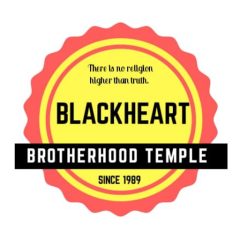
Perhaps the best-known African-based
religion today is voodoo, which is, at its
core, shamanic. As many as 60 million people worldwide are thought to practice
voodoo. Generally, it seems that it flourished
wherever the slave trade was particularly
widespread.
Voodoo
Voodoo, which came into prominence in Haiti, is
probably the best example of the assimilation of African beliefs into other cultures. The structure
of voodoo was the result of the enforced intermingling of African slaves from different
tribes. Little attention was paid to their spiritual
needs, so in despair, a common thread had to be
found by the slaves themselves. They began to
invoke not only their tribal gods but also to
practice rites other than their own. This tribal
mixture can be seen in the names of different
rites and in the gods, such as Damballa, Obatala,
Oshun and Shango, who are still worshipped
and who were originally deities from all parts of
Africa. The slaves mixed practices and rituals
from numbers of tribes and in the process
developed a completely new religion that very
quickly gained popularity.
The French rulers of Haiti realized that this
the new religion was a danger to their colonial
system and so they denied all Africans the right to their religious practices, severely punishing anyone who was found practicing voodoo.
The French decreed that all slaves be baptized
as Catholics, and so Catholicism became
superimposed on the African rites and beliefs (which the slaves still practiced, either in secret
or concealed as harmless dances and parties).
This religious struggle continued for more than
three centuries, but none of the terrible
punishments inflicted could obliterate
the faith of the Africans.
Followers of this new religion of voodoo
considered the addition of the Catholic
saints to be an enhancement of their faith and set about incorporating Catholic hymns,
prayers, statues, candles, and holy relics into
their rituals. Tribal deities were often given the aspects of Catholic saints; they did not become
the Catholic saints, but retained their original characteristics and personalities while adopting
the symbolic trappings of Catholicism and the saints whom they seemed to resemble most.
The whole structure of voodoo reflects its
history. The cross as a symbol, for instance, was
easy to accept because it was already a powerful
representation in the tribal religions, as the
crossroads where the spiritual and material
worlds meet. It was adopted as the symbol of
the powerful god Legba, who is the guardian of
the gates, the messenger of the gods, and has multiple faces. As the Trickster, he is the child
who wants things he cannot have. The saint
most closely associated with Legba is St Peter, who holds the keys to the kingdom of heaven.
